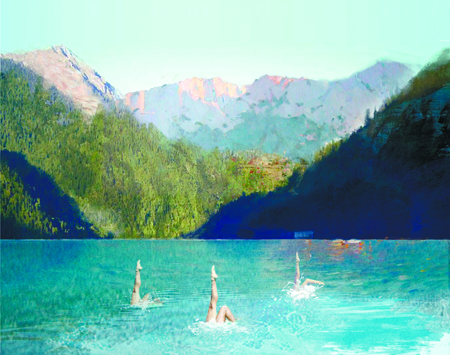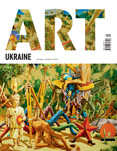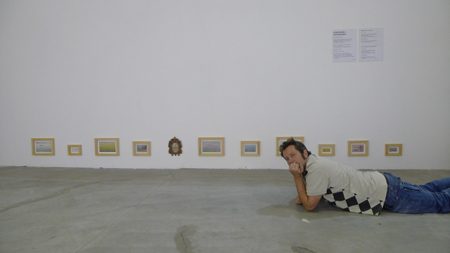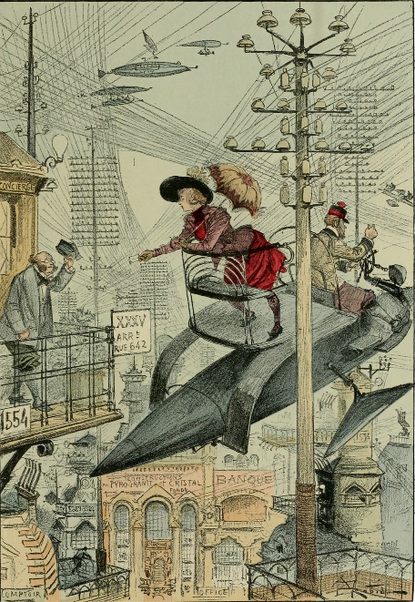Igor Gusiev. Tamer of the Beasts.
PERSONA
1993. Summer in Odessa. The Museum of Contemporary Art in the ‘Shahsky Palace’ at the corner of Gogol Street and Mystetstv Boulevard. The view of Odessa’s port and bay opens up from the windows of this beautiful gothic-style building. During the times when my mother, Rita Zharkova, was in charge of the museum she used this space as her office, and when I would come to visit, I would always meet her in there.

Igor Gusiev. "Swan Lake". "Susupected Reality" project. Tirs Gallery, Odessa, 1992

Article from ART UKRAINE # 1(1) 2011 September-October
This time I, together with my wife and her friend, decided to bring to life a project called Aquavita, a part of which was done in Saint-Petersburg, and the rest - in Odessa. What it ended up being was a complex installation in three halls of the Museum of Contemporary Art, a TV-show and a series of performances at the boulevard next to the Teshchin Bridge. During the process that preceded this, we came all the way from Saint Petersburg to Odessa to visit my mother. Sometime during the conversation she mentioned that she would like to introduce me to some youngsters, whom she and others from time to time named ‘Bastards’ («Покидьки»). According to her words they were renting out a space in the city’s downtown area for their artistic experiments.

Igor Gusiev
“Well, ok,” I thought. “Let it be Bastards”. But instead of ‘bastards’ I met some quite pleasant young men accompanied by a very beautiful girl. Yulia, aka Depechemode, was the girlfriend of a very presentable young man with a cunning expression and a singer-like voice. His name was Igor Gusiev. The other guy, Vadyk Bondarenko (aka Bondero), looked a lot like young Mark Almond. And there they were in front of me, cracking jokes, sending out positive energy and being full of life.

General State of Being group performing "Ocean Defloration". Tirs Gallery, Odessa, 1993
There was no ‘trashness’, no stupidity, no exaggerated self-worth, selfishness or aggression or confusion. Only a kind of ‘high-end style’ feeling that flowed from within these young people.

General State of Being group performing "Ocean Defloration". Tirs Gallery, Odessa, 1993
At that moment in time, I was already a maestro of conceptualism in Moscow, the head of the avant-gardist club and founder of the ‘Medical Hermeneutics’ («Медична Герменевтика») club, which received international acclaim. I had experience, made no compromises and was hard to tempt. But then, looking at those Odessa youngsters, who were about to enter my world, I felt that we were somewhat on the same level and could potentially become good friends. And it is not just because of the democratic Odessa style which I, having been brought up in the hierarchy-loving Moscow world, still very much respect. It was the talent of those people, full of faith and stripped of provincial complexes, which made me sure of it. Their sincerity and genuineness was charming. That’s why without having second thoughts I invited them to take part in our project. Next to Odessa’s love for profit making, stupid provincial self-satisfaction and other craziness their naiveté was almost aristocratic.

General State of Being group performing "Ocean Defloration". Tirs Gallery, Odessa, 1993
I gave them the idea to become ‘official’, having suggested that they should start by coming up with a name for their ‘group’ and choosing their line of work. This is how the action group ‘General State of Being’ («Загальний стан») came to be. What happened next is already well-known and does not need to be retold here.
I would like to examine Igor Gusiev’s persona more closely here. At first, not having noticed his artistic talents, I thought him to be a poet, a singer or some kind of performer. But at one of the shows at the Museum of Contemporary Art, I was very taken by a work titled Swan Lake («Лебедине озеро»). Never before have I seen anything like this in Odessa or among art from Odessa: the concept and the artistic form were outstanding.

General State of Being group performing "Ocean Defloration". Tirs Gallery, Odessa, 1993
The canvas was like a grandmother’s handmade blanket. A lake, surrounded by snowy mountains... It gave an impression of having been conceived somewhere in the Swiss countryside, somewhere near Jungfrau or Luzern. There was nothing there that would seem banal: all was sincere and genuine. In the center of the lake one saw a lot of legs sticking out of the water, as you would with synchronized swimming. But the legs were actually sticking out of ballet tutus, which, in their turn, created the illusion of foam on the lake’s surface. It was clear that what we were looking at was a scene from ‘Swan Lake’, except that all the characters were turned upside-down. All this was done with the help of a palette knife, very crisply and flashy, despite the canvas’s coolness. Among blue, green, white, violet and turquoise, one saw traces of warm colors and this created a very light-spirited tone, resembling Maliavin rather then Vrubel. All in all – this was a work of a mature artist.
There was nothing naive or amateurish in the work. Just professionalism shown through a combination of a firm hand and a free calligraphic style, lightness and certainty, reliability of stroke, density of the artistic layer and shameless density of colour. The finished work and the drawing completed, supported, even shaped one another, irony and seriousness, daring and diligence created as one whole.
The work was incredibly impressive and when I found out that Gusiev was the artist, - I was simply shocked. I had a genius in front of me, someone whom I wasn’t able to spot from the very beginning. I felt right away that this person would become the leader of the new generation of artists and, as it turned out, I was right.
Igor never created a defined manner, style or direction. Working in different media - painting, collage, assemblage, graffiti, installation and performance, video, environment, group projects, or even doing gallery work – he was free from being tied to one particular thing and was able to show his nature, which is very easy-going.

Igor Gusiev. "Art Raiders. First Experience". Starokonny Market, 2007.
It is a known fact that when an artist’s soul is not in turmoil it turns into a mirror and reflects the all-penetrating energy field. Worries of the soul, on the other hand though, distract an artist from focusing on what is going on inside his/her soul as well as prevent from seeing ‘the bigger picture’ around. This very often pushes artists to fall victims to client’s whims and prevents them from expressing their own artistic voice.
But such things were never a threat for Gusiev. Slowly and persistently, like an ocean wave, he was moving through the plurality of esthetic horizons and cultural paradigms, following his own orbit, gradually forming a signature structure where there was no place for duplication, only potential for a leap from one Unknown into another.
He surfaced in the local art-scene and right away made his stand through his attempts to find a way out of a decades-long postmodern stagnation. His force and originality can be likened to those of the great Renaissance and avant-garde masters, the new Columbus and Magellan. It seems he was predestined to become part of something ‘big’.
His next works were mysterious, like the Oracle’s answers. They were always very clear, very distinct in what they were expressing. There was never anything excessive and unnecessary in his pieces, all the elements were to the point.
Igor Gusiev. "Paranois of Cleanliness". Tirs Gallery. 1997.
My mom used to say that an artist can be neither a saint or a sinner. Since he is working with both shadow and light it is almost an unconditional requirement for him to see both the light and the dark sides of life. Dirt is a material just as precious stones are: everything in an artist’s ‘laboratory’ is an element for an alchemic experiment. And Gusiev is indeed such a scientist.
His Paranoia of Cleanliness («Параноя чистоти») installation, for example, was a typical kind of performance where the artist shows his creative potential in full. At the same time, it was free from overthinking and exaggeration.
Igor was quick to respond positively to my proposal to work together. The Big Fountain series («Великий Фонтан», 1995) became the result of this collaboration. It consists of 16 works, with the number 16 corresponding to the number of stations that the ‘Fountain’ tramline in Odessa has.
At that time the Museum of Contemporary Art had already closed down, and what was left after it were 16 different-sized hardboard sheets, which we used as canvases for the works. We drew the Big, the Medium and the Little Fountain, placing them into the Odessa cityscape. This series could be seen as the one of the first Patternist works, a movement formally manifested only 13 year later. In this sense Gusiev, together with V. Pivovarov and P.Pepperstein, Luiggi Serafini and A.Nasosov, V. Tsagolov, S. De Rokambol and S. Bugaev-Afryka was a forerunner of Patternism, which in the new millennium came to take the place of the modern-postmodern epoch.
In 1996 Gusiev, together with Vadym Bondarenko (Bondero), presented the Führer under Control («Фюрер під контролем») project at the National Museum of Art. By this time his ironic and confident artistic voice had already became very clear. The artist ‘remade’ Hitler’s watercolors into huge canvases done in a very interesting color-scheme and with solid texture. It is highly creative, it is a coming true of a failed artist’s dream, an art that is passionate, moving and deeply mystical.
How Igor managed to convert mediocrity into genius remains a mystery. But he did the impossible and created Romantic masterpieces. It was very humane of him to give a failed artist a second chance: if we take into account that Hitler failed in every respect – as a human being, a man, an artist, a politician and a leader – then Igor saved at least one of Führer’s dreams.
New horizons took Igor further and further from artistic territories he had already explored. In 2000 he came up with the Art in Extreme Conditions project («Мистецтво в екстремальних ситуаціях»), which surprised me with its crafty simplicity. “Just imagine, you go into a bank, and then all of a sudden robbers rush in ordering everyone to the ground. And then, lying there on the floor, you notice that right in front of you there is a tiny little exhibition of tiny little works, as if meant to help kill your time and save you from getting bored while you are lying with your face down.” A year later, at the ‘Just Kidding’ («Жартома») show at the Museum for Traditional Art in Kyiv, Gusiev used tiny etudes of some mediocre social-realist, which the latter made during trips to different countries. Gusiev hung them just right above the room’s baseboard, metaphorically placing them onto the lowest level the creative pyramid.
I think Gusiev really pities with failed artists like Hitler or that ‘mediocre’ social-realist the works of which he used. Thus he was not really making fun of them, he committed a kind of humanist act by reusing and appropriating their work.
Next on Gusiev started experimenting with video art, psychedelic collages and graphics.
At the same time he was greatly outraged by growing importance of parties and socializing for one’s success in the art-world, by the growing number of different institutions, galleries, and collectors. But instead of giving in to despair he decided to create an alternative to the commercial side of things that he so disliked.
In 2007 he initiated Art-Raiders («Арт-рейдери») a project that lasted 3 years and had the Starokinniy market-place, a famous flea-market at the heart of ‘Moldavanka’, as its location.
The project was not just successful; it became ground for the patternist movement. Patternism evolved from the desire to bring back a pure language of signs, something that the members of the group believed to have been lost with the development of writing and colloquial language. They named this language ‘Visti’ (Eng. ‘news’) and the Art Raiders project became the first step towards its revival.
Aleksandr Venetsky. "Bakhcheburg" project. Norma Gallery, 2010.
The artistic intelligentsia always used flea markets as a great resource for objects to use in their homes and studios, as clothes, presents, and so on.
The Volodymyrsky in Saint-Peresburg, Tishentsy in Moscow, Sinnyi market in Kyiv and Starokonka in Odessa were always a place of interest for the art-community.
The idea of Art Raiders lay in buying things and later using them to create new pieces (‘assemblage’) or for a Duchamp-like appropriation. All works had to correspond to a particular theme chosen by one of the curators. Art-objects, or ready-mades were exhibited right there, in the middle of the market-place, on an oilcloth spread out on the ground. However they were not for sale. They were exhibited in their ‘natural environment’, among other objects that could potentially become ‘art-works’ too (some of these works were even exhibited at the Artists Union in Odessa). Such shows took place every week and were photographed and recorded on video. This material became the basis for a book that Anatoliy Dymchuk published earlier this year.
Simultaneously Gusiev opened an alternative gallery in a cellar at Kovalska Street and called it ‘Norma’. There his most radical projects came to life, far away from trendy galleries and museum spaces. It was at ‘Norma’ that many new artists got to show their work for the first time, and it was thanks to this space that Odessa’s cultural life became different from that of other big cities, where art had long since been an answer to the demands of the client.

Igor Gusiev. From the "Art in Extreme Condiditons" project. 2001.
Kyiv, Moscow or Saint Petersburg couldn’t even dream of seeing something like ‘Norma’. In Odessa, though, artists got a right for free expression and could show their work in an alternative environment. And it is all thanks to Igor Gusiev, someone who dreamt of complete freedom and liberation from poignancy.
But his activity in so many different projects and roles (as an artist, as a curator, as a galleries, as an instigator) not only didn’t distract Gusiev from his artistic exploration. On the contrary, it enriched his potential as an artist and gave him more space for expression. Hence the moral: the secret to being a genius lies in the ability to learn from different projects and grow from that experience.
How does one unite a torero and a ninja in one? If you know that the goal of both is to hit the target with high precision, then the difference between them is in mere technique and method. Igor knows that in essence they are pretty much the same. So for him settling the long-lasting quarrel between painterly nominalism and concepts is not really a problem.
There were a lot of great painters who were far away from conceptualism. There were also a lot of conceptualists who were far away from painting. Only Gusiev was able to bring the two together in a very harmonious manner. This was never achieved in Kyiv or Moscow, although many attempts were made. Viktor Pivovarov from Moscow probably managed to be most succsessful, as was Timur Novikov from Saint-Petersburg and Oleksandr Gnilistky from Kyiv. But Gusiev remains unique and unrivaled.
A Zen-like spontaneity and precision, monumentality and lightness, power and intangibility of his method are the best possible examples of the marital union between artistic tradition and anti-artistic radicalism. Duchamp and Botticelli, Yves Klein and Ch’i Pai-Shih, Rembrandt and Kippenberger all come together in Gusiev. Humor protects him from excessive sensibility and thoughtfulness; at the same time his education saves him from thoughtlessness and the temptation to be a preacher to others. He is the embodiment of the ‘Golden Middle’ – a dream of a contemporary artist who is being sucked in by the Institution on one side and by grim mediocrity on the other.
I myself, for example, was left to be a ‘wunderkind’, and my exquisite dilettantism seems like walking a tightrope compared to the work of this master-bully, able to domesticate the wild. Gusiev is a tamer of beasts born from the dream of the mind.

Sergii Anufriev










